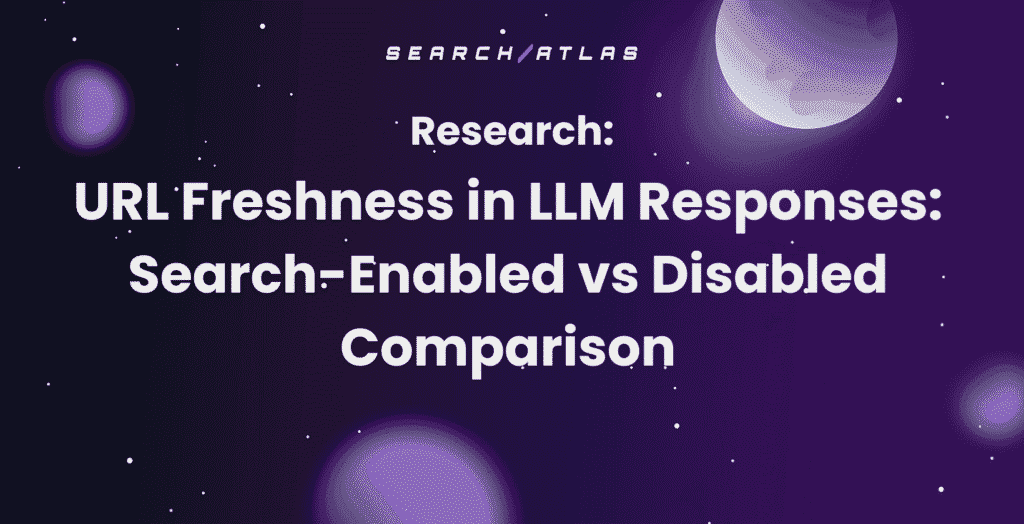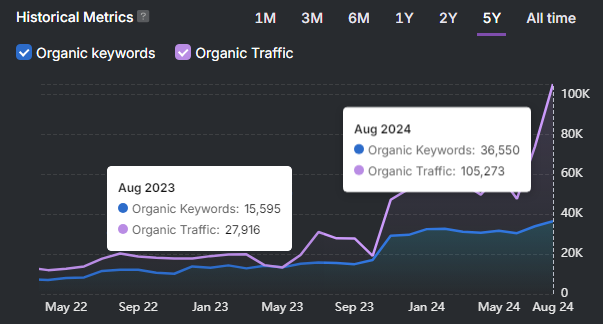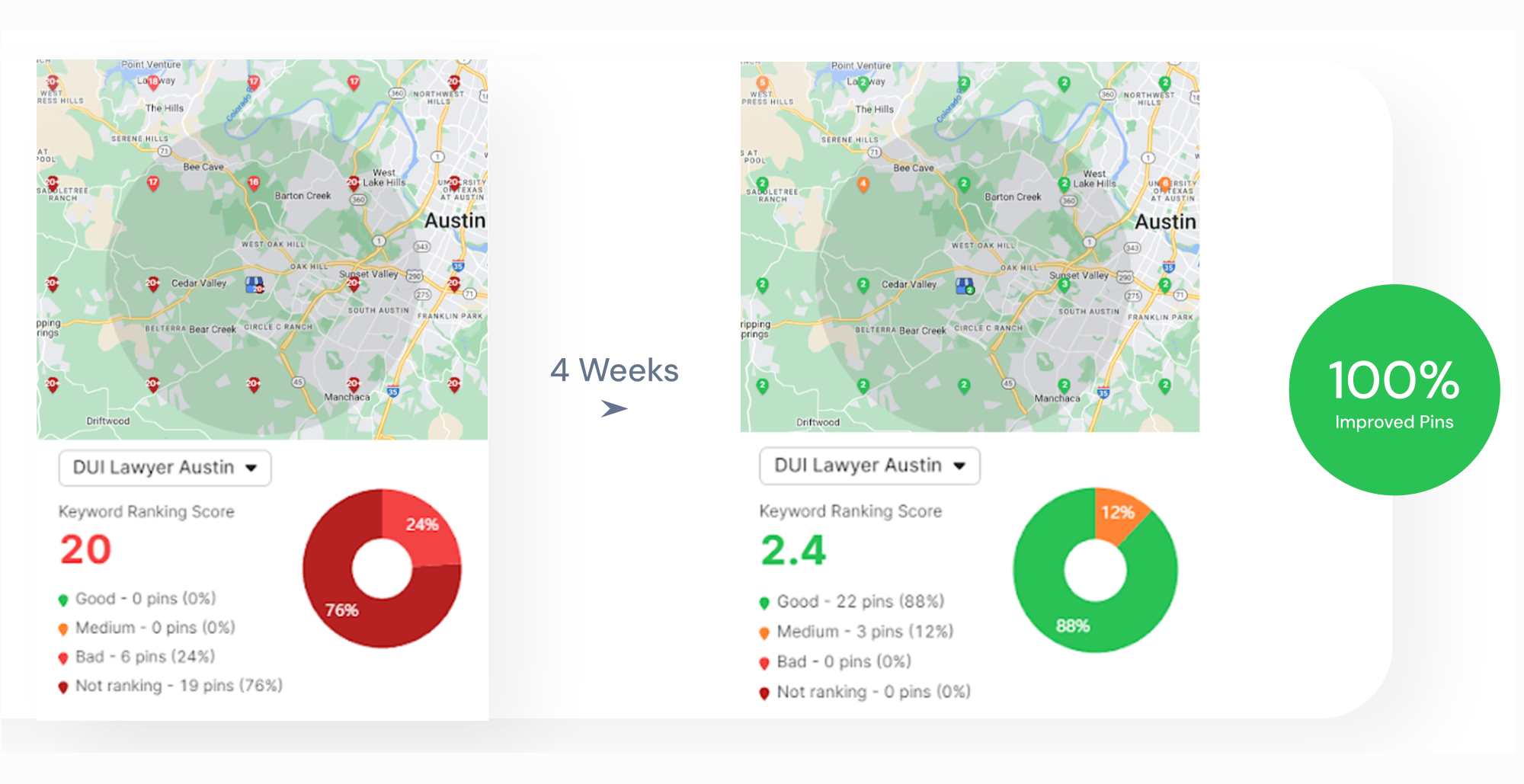Want to manage your blog like a pro?
It’s not as complicated with some planning and proper tools.
Below, we explain how to manage a blog efficiently and plan, execute, and grow your content and audience. 🌱
We’ll cover 10 key aspects of blog management and share strategies, insights, and tools that will make your job much easier and help you increase your engagement.
10 Key Aspects of Blog Management
You’ve set up your blog and now you want to get the most out of it. Here’s a checklist of things you need to pay attention to to keep it running like clockwork. ⚙️
1. Content Strategy

A solid content strategy is the foundation that helps you stay on track and ensures you’re delivering value to your audience. Here are a few key steps to make your content strategy work for you.
Plan and Schedule Posts to Maintain Consistency
Create a plan for how often you’ll post, and stick to it. Whether it’s once a week or twice a month, having a consistent posting schedule sets expectations for your readers. Use tools like Google Calendar or Trello to map out your publishing dates and topics.
This keeps your audience from forgetting you and improves your content velocity, which is a positive signal to search engines.
It’s so important that you should make it a part of your regular content audit.
Research Topics and Keywords to Enhance Relevance
Your blog’s success depends on how well you can match your content with what your audience is looking for. There are four kinds of search intent, and each requires a different approach to content.
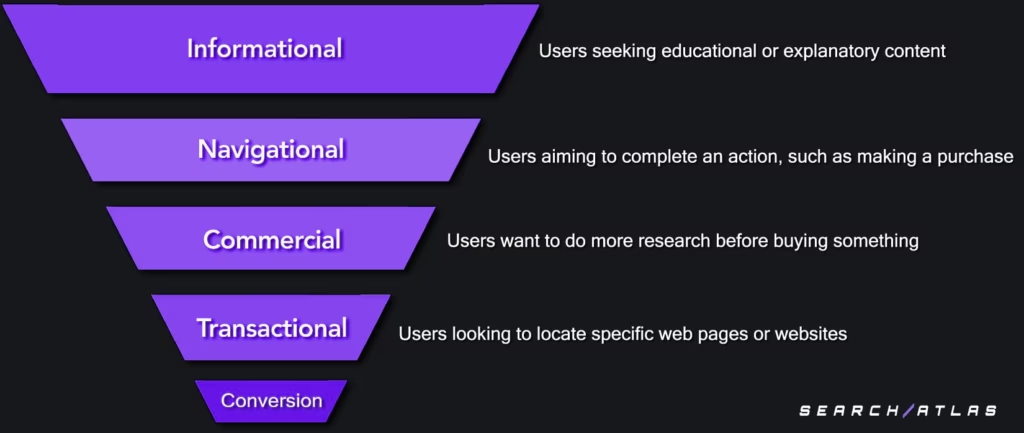
Of course, to get this right, you’ll need to do keyword research or find out what people are searching for in other ways (there are a few more research goldmines besides keyword research tools).
Develop a Thorough Content Plan to Build Authority
If you want to boost your website’s authority, you will need to create a strong content plan.
Our tip is to start with a broad seed keyword related to your niche. This seed keyword will guide your research and help you identify a cluster of related topics. Then, map out subtopics and break them into manageable pieces.
This will save time and create a clear content hierarchy that works for readers as well as search engines.
2. Branding Consistency
Consistent branding strengthens your connection with readers, and you’ll have to do two things to get it right.
Ensure Consistent Voice and Tone to Strengthen Brand Identity
Select a voice—friendly, professional, or a blend—and use it consistently in every post regardless of format.
This steady approach builds reader trust and reinforces your overall brand image. Experiment until you identify the style that best represents your business, and apply it consistently in all your content.
Develop a Style Guide to Streamline Content Creation
A style guide helps maintain uniformity across your blog. Record rules on grammar, vocabulary, formatting, and visual elements. If there are more people working on the content, a style guide will minimize differences and also save you time on editing.
It’s one of the most useful secrets to creating better content.
3. Content Diversification
Varying your content formats keeps your blog interesting and attracts different types of readers. While it’s crucial to stick to the topic, you can still diversify your content in other ways.
Explore Various Formats to Engage Diverse Audiences
Different readers engage with content in different ways.
For example, short-form video is particularly effective with the highest ROI of all formats. 🎞️
If you’re working with brands, Youtube is one of the best places to expand to, although it requires additional knowledge on Youtube keyword research.
Whatever you do, don’t stick to one format only. Mix things up by creating a range of formats—articles, videos, infographics, podcasts, and more.
Collaborate with Guests to Enrich Content Variety
Guest contributions are an excellent way to diversify your blog.
When you feature different voices, you introduce new perspectives and expertise, but also show your audience that your platform is an important part of its niche. So this not only adds variety but also helps expand your network and audience reach.
4. Engagement and Interaction
To truly grow, you need to actively engage with your readers and encourage interaction. This strengthens the relationship with your audience and keeps them coming back.
Respond to Comments to Foster Community
Replying to comments shows your readers that you value their input and are willing to interact. This builds a sense of community and encourages more people to engage with your content. Regular interaction makes your audience feel heard and strengthens their connection to your brand.
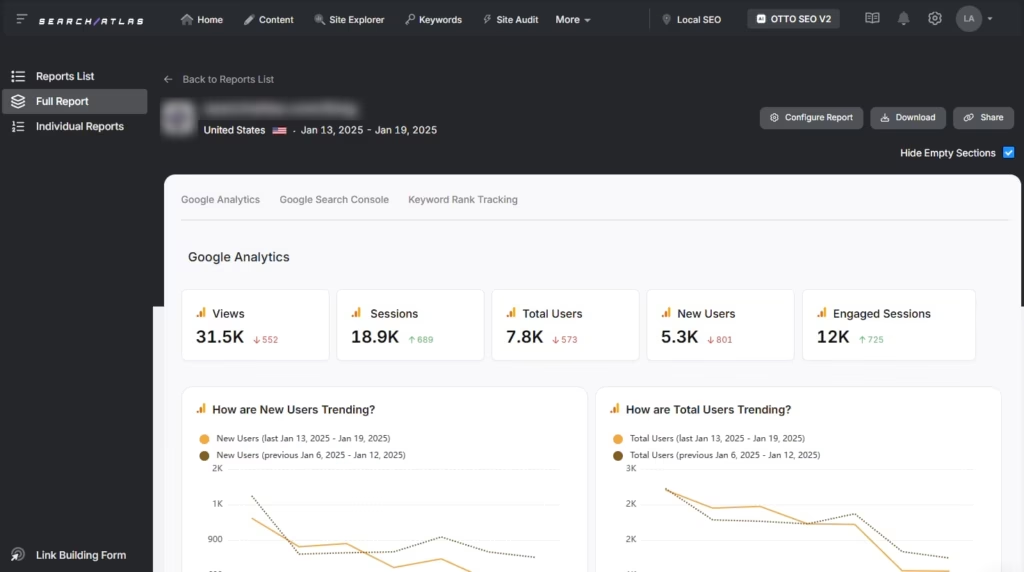
Encourage Reader Interaction to Boost Engagement
Encourage readers to share their thoughts, ask questions, and participate in discussions. Whether through polls, comment sections, or calls to action, inviting interaction boosts engagement and gives you direct feedback on what your audience cares about.
Utilize Social Media to Expand Reach
Social media is a powerful way to amplify your blog’s reach. Share your posts across platforms, join conversations, and interact with followers to bring new readers to your blog. This also gives you an opportunity to promote older posts, keeping your content in circulation and growing your audience.
5. SEO and Optimization
Getting your blog noticed by search engines is key to attracting more readers, and this part doesn’t have to be so hard with new tools.
Implement SEO Best Practices to Increase Visibility
To make your blog more visible, it’s essential to follow SEO best practices (and avoid common SEO mistakes!)
This means using the right keywords, crafting engaging meta descriptions, adding alt text to images, and linking to other posts. These steps will help your content show up in search results and bring in more organic traffic.
Use Analytics to Track and Improve Performance
Analytics give you a snapshot of how your blog is doing but it also takes some time to learn how to measure it.
Pay attention to metrics like page views, bounce rate, and engagement to see what’s working and where you can improve. By tracking these numbers, you can make smarter decisions to keep growing your audience and boosting performance.
Optimize Older Posts to Sustain Relevance
Don’t let your older content gather dust. 🧹
Go back and refresh posts by updating information, improving readability, and optimizing for new SEO trends. Keeping your content current ensures it continues to attract traffic and gets it much closer to becoming an SEO-friendly blog.
6. Monetization
Monetizing your blog can be an exciting way to turn your passion into profit, but it’s important to strike the right balance between money and authenticity. So do both of the following.
Explore Monetization Options to Generate Revenue
There are plenty of ways to monetize your blog, from affiliate marketing and sponsored posts to selling digital products. Experiment with different strategies to find what works best for your niche and audience, and start generating income while sharing your expertise.
Balance Monetization with Quality to Retain Readers
It’s easy to get caught up in monetizing your blog, but remember, your readers come first. Keep the focus on providing high-quality content and avoid overwhelming your audience with ads or too many promotions. This way, you can maintain a loyal audience while still earning from your blog.
7. Technical Maintenance
Keeping your blog running smoothly requires ongoing technical maintenance. While staying on top of all the details can feel overwhelming, there are tools available that can handle many of these tasks automatically, with just one click.
Let’s take a look at the key areas you should focus on for a hassle-free and secure blog experience. 🛡️
Regularly Update and Backup to Ensure Reliability
Keep your blog’s software, plugins, and themes up to date. Regular updates prevent security vulnerabilities and bugs from affecting your site. Set a routine, whether it’s weekly or bi-weekly, to check for and apply updates.
Backups are equally important. Use a plugin or service to back up your blog automatically, ensuring that you don’t lose content due to unexpected crashes. Store backups on multiple platforms, such as cloud storage and an external drive, for extra security.
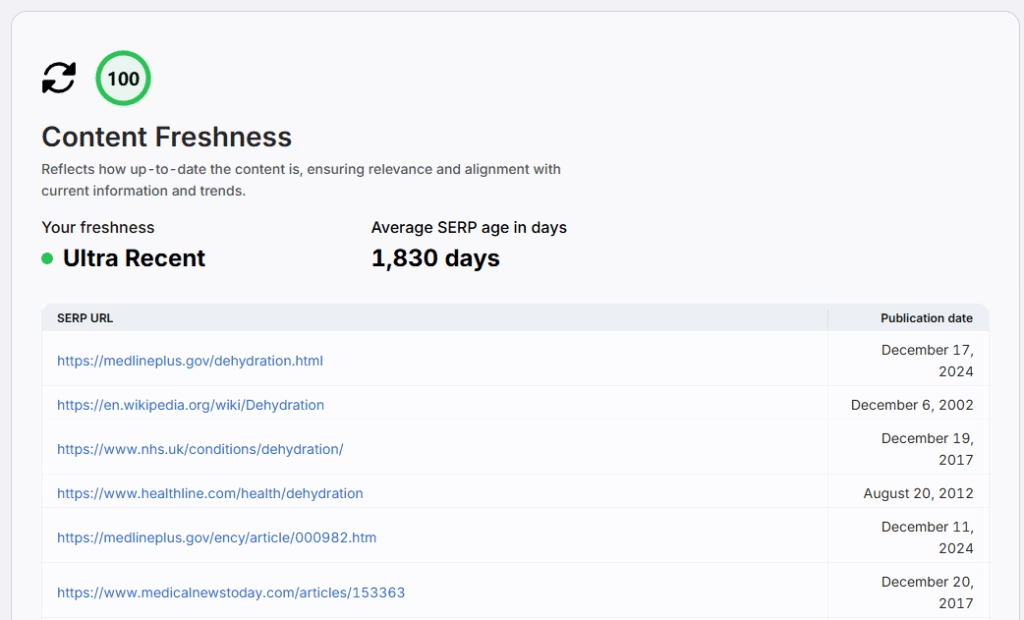
Enhance Security to Protect Your Blog
Blog security should be a top priority. Install a comprehensive security plugin, such as Wordfence or Sucuri, to monitor and protect your site. Always use unique, complex passwords and enable two-factor authentication for an extra layer of protection.
Strongly consider using an SSL certificate to secure data transmission and protect user privacy. Regularly scan your site for malware and potential threats.
There are plenty of things to look out for, so we suggest creating a security checklist.
Manage Plugins Efficiently to Improve Functionality
Plugins are great for adding functionality, but too many can slow down your blog or cause conflicts. Audit your plugins regularly to disable or remove any that are unnecessary. Ensure the remaining plugins are updated and properly configured.
Opt for lightweight, well-coded plugins, and avoid overloading your blog with too many options that do the same thing.
8. Performance and Speed Optimization
Speed and performance directly affect user experience and search engine rankings. A fast site keeps readers engaged and encourages repeat visits.
Improve Loading Times to Enhance User Experience
To speed up your blog, start by optimizing images. Compress images without sacrificing quality using tools like TinyPNG or ImageOptim. Also, implement lazy loading so that images only load as users scroll down the page.
Minify and combine CSS, JavaScript, and HTML files to reduce their size and the number of server requests. Utilize browser caching to store frequently used files on visitors’ devices, reducing load times for returning users.
Also, a Content Delivery Network (CDN) can distribute your content across multiple servers globally, speeding up load times regardless of where users are located.
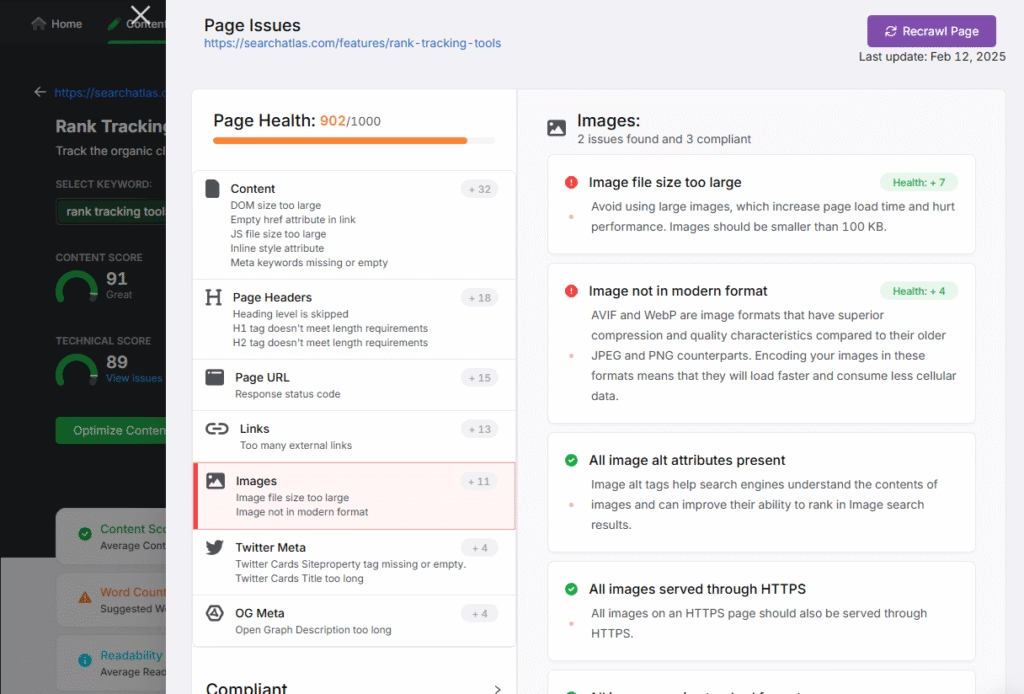
Optimize for Mobile to Reach More Users
With mobile traffic on the rise, ensuring your blog is mobile-friendly is non-negotiable. Use a responsive theme that automatically adjusts for different screen sizes.
Ensure touch elements are large enough to be clicked easily, and avoid pop-ups that disrupt the mobile experience. Optimize mobile images by using smaller file sizes and consider implementing AMP (Accelerated Mobile Pages) to improve loading times further on mobile devices.
You can check all of this with tools like Site Audit and get 24/7 alerts whenever something goes wrong. Also, our AI agent, OTTO SEO, lets you find and fix issues with one click.
9. Legal and Ethical Considerations
Adhering to legal and ethical standards helps protect your blog and builds trust with your audience.
Understand Copyright to Protect Your Content
Respect copyright laws to avoid legal issues. Only use images, music, and content you own or have licensed rights for. Free image sites like Unsplash or Pexels can be a valuable resource for royalty-free visuals. Always credit the creator when required.
If you repurpose content from other blogs or websites, make sure to obtain permission or provide proper attribution. For written content, it’s important to avoid plagiarism by citing sources when necessary.
Be Transparent with Disclaimers to Build Trust
Transparency is essential for ethical blogging. If you use affiliate links, sponsored content, or receive compensation in any form, clearly disclose it to your audience. Place disclaimers where they are visible, such as at the beginning or end of a post or via a dedicated page for affiliate disclosure.
10. Building a Community
A strong community is the backbone of any successful blog. Creating spaces for interaction strengthens the connection with your readers and encourages engagement.
Create a Mailing List to Cultivate Loyal Followers
A mailing list is a powerful tool for building relationships with your audience. Start by offering an incentive, such as a free ebook, exclusive blog post, or discount for signing up. Use email marketing tools like Mailchimp or ConvertKit to manage your list and send personalized, engaging newsletters.
Send regular updates with valuable content, and segment your list based on interests or engagement levels. Keep your emails conversational, offering a mix of educational material and promotions. The goal is to nurture relationships, not just promote products.
Host Events to Strengthen Community Bonds
Interactive events, such as webinars, Q&A sessions, or live chats, provide an opportunity to connect directly with your audience. Use platforms like Zoom or Instagram Live to host events where you can answer questions, discuss industry topics, or share behind-the-scenes insights.
Let AI Bring Your Blog to the Top of Your Niche
Managing a blog is no small task—it requires balancing content creation, technical maintenance, SEO, and community building. But with the right strategies in place, you can turn your blog into a powerful platform that attracts, engages, and retains readers.
To truly excel, automation is the game changer. Tools that streamline your workflow save you time and help you stay on top of everything. By automating key tasks, you can focus more on what matters: delivering great content and connecting with your audience.
Ready to take your blog to the next level? Sign up for a free trial with Search Atlas today, and let us help you automate your SEO and content strategy.
No commitment—cancel anytime!






